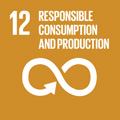- Docente: Laura Stancampiano
- Credits: 6
- SSD: VET/06
- Language: Italian
- Teaching Mode: In-person learning (entirely or partially)
- Campus: Bologna
- Corso: First cycle degree programme (L) in Animal Production (cod. 8882)
-
from Sep 16, 2024 to Dec 05, 2024
Learning outcomes
The language of the course is Italian: see the relevant italian section of the guide.
Course contents
The language of the course is Italian: see the relevant italian section of the guide for details. Main contents are:
Introduction to epidemiology and veterinary parasitology
General concepts of veterinary parasitology.
Frequency measurements in disease epidemiology.
Risk
Temporal pattern of infections and diseases
Evaluation of diagnostic tests.
Surveillance, monitoring, control
Special parasitology: protozoa, nematodes, trematodes, cestodes and artropods.
Readings/Bibliography
Lecture note on Virtuale.
- Epidemiologia. Teoria ed esempi di medicina veterinaria. Bottarelli E., Ostanello F. -Edagricole, Milano. –integrabile sul sito: http://www.quadernodiepidemiologia.it/epi/HomePage.html
- Guida allo studio della Parassitologia. Pampiglione S., Canestri Trotti G. -Società Editrice Esculapio, Bologna.
- Veterinary epidemiology. Thrusfield M. -Blackwell publishing. III edizione
- Parasitology in Veterinary medicine. Deplazes P. et al. -Wageningen Academic Publishers, Wageningen the Netherlands.
- Parasitology: a conceptual approach. Loker E.S. & Hofkin B.V. - Garland Science- Taylor & Francis Group, New york and London.
- Parassitologia - a cura di Frank E. G. Cox. Zanichelli, Bologna.
- Parassitologia e Malattie Parassitarie degli animali. Taylor M.A. et al. Edizione italiana a cura di Garippa G. et al. -Edizioni Mediche Scientifiche Internazionali, Roma.
- Parassitologia zootecnica. Ambrosi M. -Edagricole, Bologna.
Teaching methods
Frontal classes and laboratory
The students have to carry out modules 1 and 2 in e-learning mode [https://www.unibo.it/it/servizi-e-opportunita/salute-e -assistance / health-and-safety / safety-and-health-in-study-places-and-internship] and participate to module 3 of specific training on safety and health in study places. Information on dates and methods of attendance can be consulted in the specific section of the degree program website https://corsi.unibo.it/laurea/ProduzioniAnimali/formazione-obbligatoria-su-sicurezza-e-salute
Assessment methods
Oral examination in Italian language: see the relevant italian section of the guide.
Teaching tools
PC, projector, power-point, Virtuale. Parasite museum specimens, textbooks and documents provided by the teacher for classroom practical activities, wooclap.
Office hours
See the website of Laura Stancampiano
SDGs




This teaching activity contributes to the achievement of the Sustainable Development Goals of the UN 2030 Agenda.
